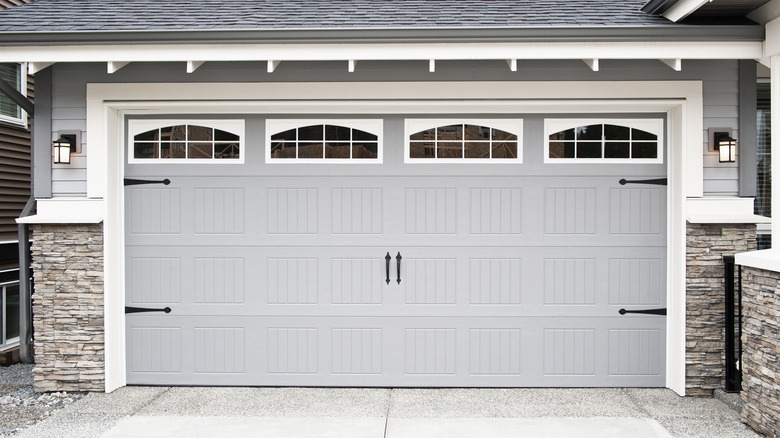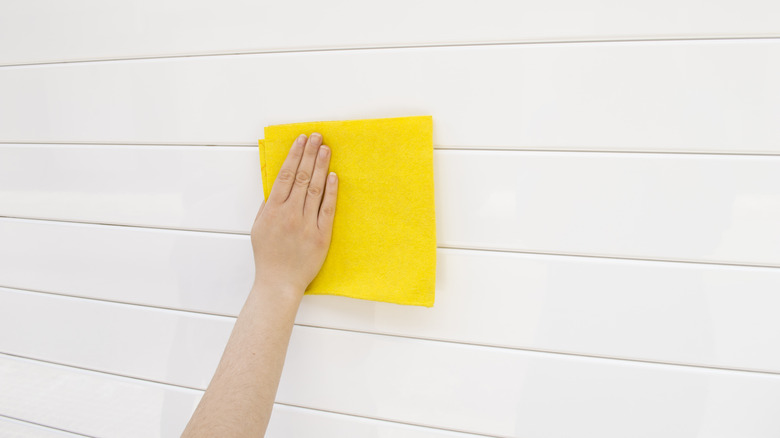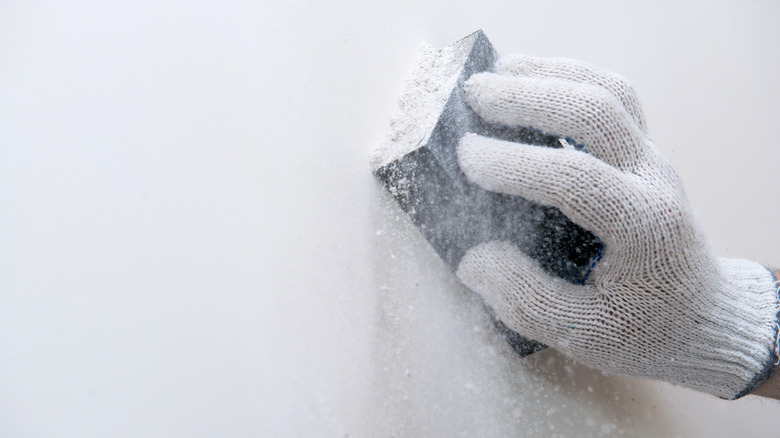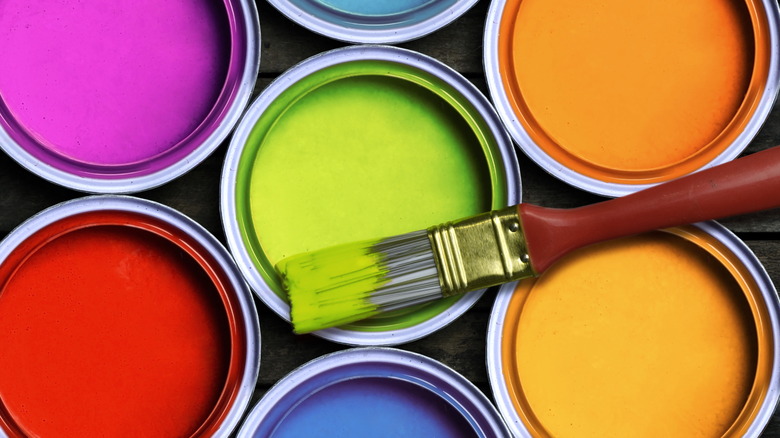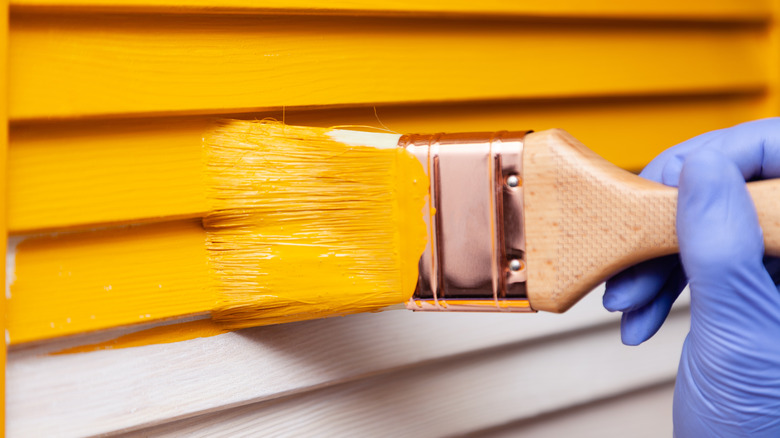5 Expert Pointers For Painting The Exterior Of Your Garage Door
If you're looking for ways to spruce up the exterior of your home, painting your garage door is a simple project that can boost your property's curb appeal. However, throwing some paint on the garage door isn't as easy as it seems. In fact, several variables can impact your project, including dust, sun, paint type, and more. Plus, painting exterior surfaces requires you to use high-quality materials to ensure the tint withstands the outdoor elements and lasts a long time.
Despite how much preparation an exterior surface needs, doing it yourself can help keep more money in your pocket. According to Angi, painting a garage door without the help of a professional can save you $100 or more since you'll avoid paying labor costs. So, if you want your garage door to look like it was professionally painted and make sure it lasts for years, check out the tips below.
1. Clean the garage door thoroughly before painting
It's crucial to clean the garage door thoroughly before starting to paint. While you may want to get this project over as quickly as possible, giving the surface a rinse can go a long way. According to PaintRite Pros, pressure washing your canvas can remove debris and allow the primer and paint to adhere better to the door's surface. This also prevents painting over debris that may cause the final results of your project to appear bumpy and gunky.
If you don't own a pressure washer and don't want to purchase one, many home improvement stores, such as Lowe's and Home Depot, allow you to rent one for a set amount of time. So, you can use the pressure washer for a few hours and return it when you're finished with the condition to use very light pressure as it could otherwise damage your door, Creative Door explains. Also, ensure you're wearing protective equipment when handling paint cleaners. Finally, you may have to manually remove stains, debris, and other gunk if they're difficult to lift with the pressure washer.
2. Sand and prime your surface
Painting any exterior area of your home requires you to sand and prime the surface; the garage door falls in this category as well. To start, Repaint Now recommends using a wire brush or scraping tool to remove loose paint. You don't have to scrape away all the pigment on the garage door; instead, scrape significant flaky patches. Then, you can begin sanding the door to create a smooth finish before applying primer.
As you sand the surface, keep track of any cracks or holes that need to be filled. Ensure to wear protective gear, such as goggles and a respiratory mask as you sand, and remember to fill those gaps with caulk and sand over them to smoothen out the texture before moving to the next step.
Now you're ready to apply the primer, allowing exterior paint to stick better to the garage door. There are many types of primers available, but the best one will be one that's high-quality and specifically made for the outdoors.
3. Choose the right type of paint
Because the garage door is on your house's exterior, choosing the right type of paint is essential. While there are many types of pigment available, make sure to look for one that's specifically made to withstand outdoor weather conditions. For example, Lowe's recommends using solvent-based (oil-based or alkyd-based) paint to cover exterior surfaces because it's durable, meaning it won't fade, chip, or blister due to rain, shine, wind, and so forth. In addition to looking for solvent-based exterior paint, some tints offer additional protection against the elements by locking out moisture or resisting the sun's rays.
Another thing to look for when shopping for paint for your garage door is its finish. Like the many pigment types available, there are also many finishes, including gloss, semi-gloss, satin, and flat. Lowe's recommends investing in gloss or high-gloss paint for garage doors that'll be opened and closed frequently since it's easier to clean and much more durable.
4. Paint on a cool, non-humid day
It's best to paint your garage door when it's cool and not humid outside because the weather can significantly impact how long the tint takes to dry. According to Arizona Painting Company, oil and latex pigments can start to crack and peel due to the hot climate since they'll dry way before properly binding and sticking to the surface of your garage door. As a result, you may be left with a messily painted door surface that you'll have to sand, prime, and paint again to fix, wasting time and money. Excessive humidity can also result in a similar problem.
If you want to avoid this issue, PaintRite Pros recommends you paint during the spring or fall months, as it's neither too hot nor too cold. Also, ensure you're starting the project when there's not much wind. The ideal temperature is between 60 degrees Fahrenheit and 85 degrees Fahrenheit.
5. Keep surrounding areas clean with painter's tape and tarps
While painting your garage door can be a fun project to revamp the exterior of your house, it can also lead to quite a mess if you're not careful. That said, using painter's tape and tarps can prevent color from staining your driveway or other parts of your home's exterior.
When using painter's tape, make sure first to wipe down the desired surface with a clean cloth and ensure it's dry before application, Scotch Blue recommends. Doing so will increase the likelihood of the tape adhering to the surface and staying there for the remainder of your project. Once the desired surface is dry, apply the tape firmly, press it down, and let it sit for 30 to 60 minutes. If you also use a tarp to keep the surrounding floor paint-free, Home Depot recommends investing in a durable and heavy one to prevent it from flying away or shifting as you paint the garage door.
